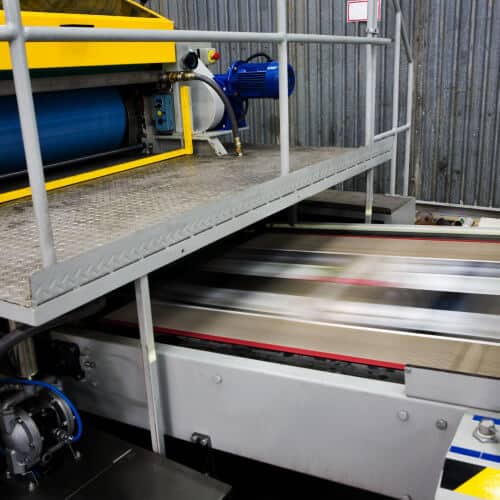How litho printing Delivers Sharp and Vivid Prints
Wiki Article
A Comprehensive Guide to Recognizing Litho Printing Strategies
The globe of litho printing, a strategy originating from the late 18th century, is an interesting mix of history, technology, scientific research and art. Remain with us as we trip right into the captivating realm of litho printing.The Historical Advancement of Litho Printing
The historic trajectory of litho printing, an essential advancement in the realm of communication, is an exciting tale of human ingenuity. The process evolved with the advent of the rotating press, which considerably raised performance. Each phase of litho printing's development showcases humanity's unrelenting search of effectiveness and quality in aesthetic communication.Translating the Scientific Research Behind Litho Printing Inks
Progressing in the exploration of litho printing techniques, the emphasis now shifts to the scientific research behind litho printing inks. The structure of these inks, their drying process, and color mixing strategies form the backbone of this intricate art type. Recognizing these aspects is critical to mastering the craft and attaining the desired print outcomes.Make-up of Litho Inks
In lithographic printing, the basic function of litho inks can not be overstated. The structure of litho inks differs depending upon its objective, yet normally, they contain 2 main parts - pigments and cars. Pigments, the color-providing elements, are carefully ground bits suspended in the vehicle, a liquid that brings the pigment onto the printing surface area. The vehicle is a complicated combination of oils, solvents, and materials, which affect the ink's drying time, adhesion, and gloss. Furthermore, numerous ingredients are present to enhance particular residential properties like flow, drying out, and resistance to environmental impacts. Each part plays a critical part in the final print's quality, making the precise formulation of litho inks an elaborate science.Ink Drying Process
From the composition of litho inks, attention transforms to the interesting process of ink drying. Two main approaches are made use of in litho printing: oxidative drying out and absorption. Absorption, on the other hand, entails the ink permeating into the paper fibers, which is a much faster procedure yet can lead to less vivid shades.Shade Combining Strategies
While the drying process plays a crucial duty in litho printing, the scientific research of shade blending techniques holds equivalent significance. This is an intricate process that entails the careful mixing of primaries: cyan, magenta, and yellow, in varying percentages to achieve a broad selection of tones. The addition of black ink, called 'key', aids in regulating the intensity and deepness of the shades. The scientific research behind litho printing inks additionally takes into consideration the openness of the ink, which impacts exactly how colors overlay and mix. To accomplish an effective shade mix, print professionals need to likewise recognize the ins and outs of ink actions, color concept, and the physical residential properties find out this here of the substratum on which the ink is used.The Art and Design Elements in Litho Printing
Litho printing takes a breath life into art and layout through its special aspects. The procedure includes producing a picture on a lithographic sedimentary rock plate or steel plate with a smooth surface. The picture is then printed onto a tool, generally paper, by moving the ink from home plate. What sets litho publishing apart is its capability to reproduce complex layouts with high fidelity, making the output nearly identical to the initial artwork. This is attained with using different line strategies such as hatching, stippling, and cross-hatching, which enable a variety of tonal effects. Litho printing suits a variety of colors, making it possible for musicians to produce vivid and dynamic prints. This combination of accuracy and adaptability makes litho printing a recommended option for several artists and designers.Modern Applications of Litho Printing Strategies
Litho printing techniques have located considerable use in the contemporary industrial industry. Its impact and value remain to grow with the introduction of brand-new developments and innovations in the field. This section will certainly explore these contemporary applications and the transformative role they play in the printing industry.
Industrial Litho Printing Uses
In today's digital age, one could ask yourself about the relevance of typical printing approaches. Yet, litho printing continues to be an essential component of the business sector. High-volume printing tasks, such description as the production of books, newspapers, and product packaging, count on litho printing for its capacity to provide superior photo quality and price efficiency. The process, which includes transferring an inked picture from a plate onto a rubber covering and afterwards to the printing surface area, offers unequaled uniformity. This makes it optimal for tasks calling for a big print run. Litho printing also supplies a broad shade range, above that of digital printing. This makes it the best selection for tasks that require lively, top notch shade recreation.Advancements in Litho Printing
Pushing the limits of conventional methods, modern developments have fueled a host of technologies in litho printing. One prominent development is digital litho printing, which incorporates the merits of digital innovation with litho's high-quality result. These innovations underscore the long-lasting importance of litho printing in the contemporary world.Discovering the Refine of Litho Printing: Detailed

Challenges and Solutions in Contemporary Litho Printing

Despite the precision and practice that litho printing happily promotes, it is not without its set of modern obstacles. Digital litho printing permits for economical short runs and very easy customization, resolving the concern of variable information. Thus, while there are challenges, the litho printing industry is proactively adapting to satisfy them head-on, ensuring its importance in the future.
Conclusion
To conclude, litho printing, with its abundant history and clinical intricacies, holds a significant place in the print sector. As the overview exposes, it's a synthesis of art and innovation, with contemporary improvements guaranteeing its relevance. The sector encounters challenges that require cutting-edge remedies, with an emphasis on automation and sustainability. The future of litho printing rests on its capability to adjust to these altering demands, attesting its enduring value in an advancing market.
Report this wiki page